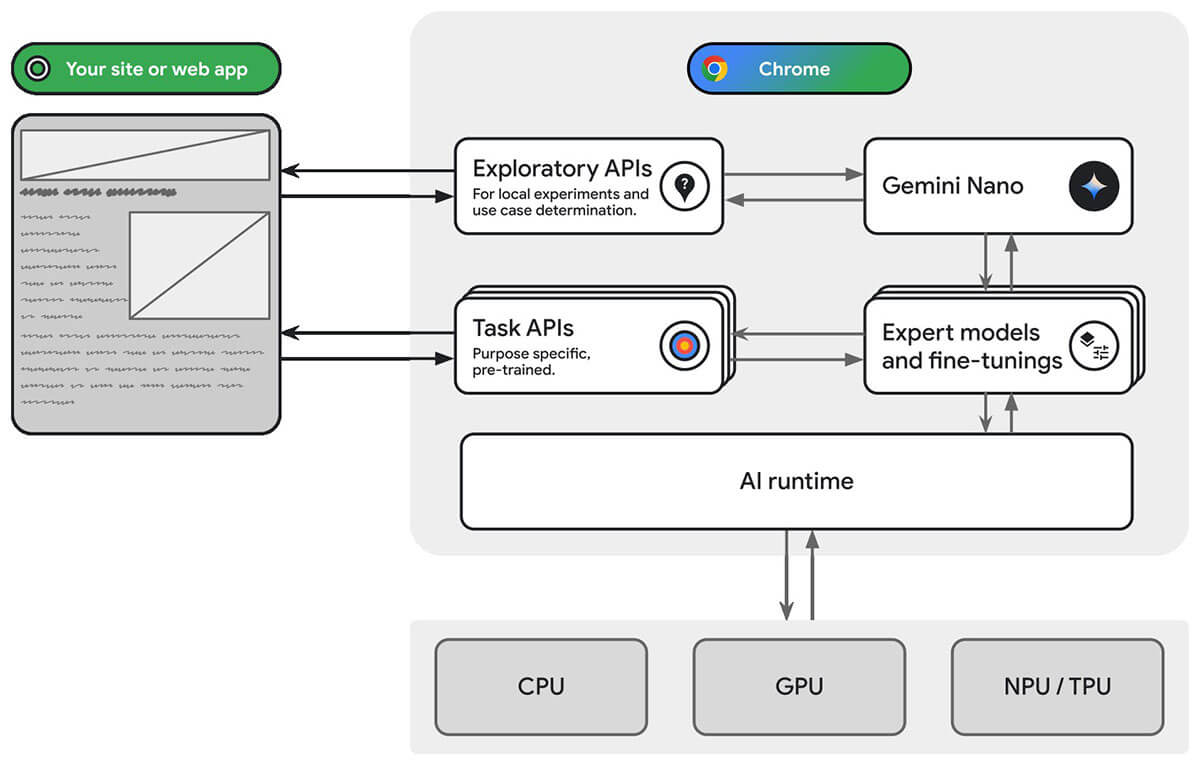At the Google I/O conference, Google announced some huge updates for the Chrome browser that is going to change it forever!
Highlights:
- Google in their I/O conference released the built-in AI feature for Chrome and Devtools.
- The feature is powered by the Gemini Nano, google’s lightweight model, and can be used for Translate and Transcribe features.
- The integration with DevTools can help developers debug their code with a clear explanation of errors to streamline fixes.
Chrome will have New Features after Gemini Nano
Google is integrating its flash model Gemini Nano into the Chrome browser. Nano integration will be available with Chrome 126 update on the desktop. They say that it will use the LLM to power its own AI features and speed up tools like Help Me Write.
Gemini Nano, the most compact model in the Gemini family of LLMs, is designed to run locally on most modern desktop and laptop computers. Google’s recent investments in WebGPU and WebAssembly (WASM) support in Chrome have enabled these models to run efficiently on a wide range of hardware.
However, users are not restricted to Gemini Nano, developers can select their preferred model from a range of options.
Jon Dahlke, Google’s director of product management for Chrome, stated during the event,
“Now, we aim to provide access to Gemini models within Chrome. Our objective is to furnish you with the most potent AI models in Chrome, reaching billions of users without the hassle of bespoke engineering, fine-tuning, scalability, and expense. Simply utilize a handful of high-level APIs — translate, caption, transcribe. This marks a significant paradigm shift for the web, and we are committed to executing it flawlessly.”
Here are two ways built-in AI in Chrome can benefit users:
- AI-enhanced content consumption: Including summarization, translation, answering questions about some content, categorization, and characterizing.
- AI-supported content creation: Such as writing assistance, proofreading, grammar correction, and rephrasing.
By the way, you can also access Gemini AI Chatbot on Google Search.
Also, the use case demonstrated in the demo above is absolutely incredible! To perform a complex task like returning a shopping item simply by uploading an image is next-gen technology.
Microsoft did something similar to this when they released Copilot on Edge. However, the Google models run locally on your device as opposed to copilot which does not.
This integration offers several benefits for web developers, including ease of deployment, access to hardware acceleration, and the ability to process sensitive data locally. On-device AI can also provide a faster and more efficient user experience, greater access to AI features, and offline AI usage.

Chrome’s Devtools is also getting Upgraded
Google also announced another amazing integration specifically for developers, the integration of Gemini with Google DevTools.
Understand console errors with #Gemini is now available in US and a few supported regions!
— Chrome DevTools (@ChromeDevTools) May 15, 2024
Follow these steps to enable it 👉 https://t.co/ff2S943BXX #ChromeDevTools pic.twitter.com/kCBgK0nJDv
John Dahlke also explained during a press briefing:
“DevTools is great at giving developers errors and warnings when their site isn’t going to work correctly. However, those errors aren’t always the easiest to interpret. In recent years, the emergence of large language models (LLMs) and AI coding assistants have opened up new possibilities, and debugging AI can now serve as a pair programmer in understanding code, generating explanations and even suggesting fixes.”
Having a tool on standby that can immediately find and explain errors in code without the developer having to worry about prompt engineering or manual search is an incredible tool for developers to leverage.
The tool becomes even more helpful when devs are working in a team. It can suggest changes/ further features based on what all members of the team are coding.
Conclusion
Google has released some amazing built-in tools for Chrome, for everyday users as well as for developers using Chrome dev tools to build their product. It is exciting to see how these new features will impact developer workflows and whether they will affect everyday users.








